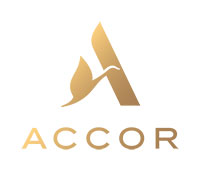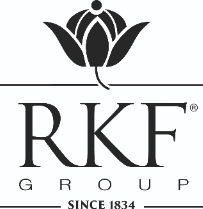
Benchmark Hospitality's Top Ten Meeting Trends for 2010 (États-Unis)
|
 |
Benchmark Hospitality's Top Ten Meeting Trends for 2010 (États-Unis)
|
Catégorie : Amérique du Nord et Antilles - États-Unis
Ceci est un communiqué de presse sélectionné par notre comité éditorial et mis en ligne gratuitement le 29-03-2010
Benchmark Hospitality International, the leading privately held hospitality management company in the United States, which operates 30 award-winning hotels, resorts, and conference centers nationwide, announces its annual "Top Ten Meeting Trends" as observed by its properties in 2010.
Trend #1 Cautiously Optimistic for 2010, with Strong Pacing for 2011!
Demand for corporate meetings is up in 2010 over last year’s results and is steadily increasing. Although early, meeting providers are cautiously optimistic for the year and are experiencing a booking pace that is ahead of 2009. Those that came into the year with solid planner-provider relationships in place are realizing once again their importance. A highly positive signal is that the overall pace is up significantly for advance bookings in 2011.
Trend #2 Booking in the Month, for the Month in 2010 … but at least meetings aren’t cancelling!
The booking window for corporate meetings remains very short term – from 30 – 45 days and is basically in the month for the month. Planners are unwilling to commit too far out and risk cancellation and other penalties, given the economic times. Fortunately, it seems the cancellation of meetings, experienced by so many providers throughout 2009, is a thing of the past!
Trend #3 Extreme Price Sensitivity, with Hotels once again competing for Meetings Business with Aggressive Package Pricing.
The recession and the AIG effect caused many traditional hotels to turn to midsized corporate meetings to fill their rooms. Although not an uncommon strategy for hotels in a recession, the severe business climate of 2009 helped re-educate traditional hotels on the merits of aggressive meeting package pricing with its high perceived value. The lingering legacy of this is extreme price sensitivity in 2010. Those conference center providers that stayed steady, maintained service levels and nurtured strong customer relationships in spite of wrenching times are emerging stronger.
Trend #4 Meeting Groups are Smaller in 2010 and Carving a Day off their Stay.
Meeting groups are considerably smaller than previously, in some cases down by 50 percent. Meetings in 2010 tend to be regional vs. national, have become much more serious in their content - replacing social functions and special dinners with working sessions, and are trimmed by at least a day to reduce pressure on budgets.
Trend #5 Being Green is now generally assumed, but for certain segments, such as Federal & State Government and Education business, it’s a requirement.
For corporate groups, meeting providers are generally expected to have green programs in place, although this is not yet universally required by corporate America. For federal and state government business as well as the education segment, however, properties must meet basic green hospitality requirements to even be considered for a meeting or event this year.
Trend #6 No Frills Meetings are ROI driven and have pushed Teambuilding, the Spa and the Golf Course onto the back burner.
There is no room for bells and whistles in the 2010 meetings climate of tight and highly scrutinized budgets. Meeting spending is seriously conservative, highly image conscious, and focused on the basics with little attention paid to the spa or a round of golf. Teambuilding, if it occurs, is integrated into the body of a meeting as there is little time to set aside for an afternoon on the high and low ropes courses.
Trend #7 Maximum Internet Bandwidth is the expectation for Planners this year. All other technology demands are eclipsed by this.
In 2010, planners are not interested in the most advanced, cutting edge meeting technology available. Conversely, they’re coming to negotiations with the expectation that a hotel, resort or conference center will have current meeting technology installed. What they are demanding, however, it that providers be able to provide maximum connectivity to support online content and applications during the meeting. This is of critical importance universally.
Trend #8 Today’s planner is a fierce price negotiator, and feels empowered to expect concessions.
The aftermath of 2009 is that planners come to pricing discussions today armed with negotiation skills carefully honed over the last 12-18 months. Their expectation is for properties to extend significant concessions across the board to pump up value for the meetings budget. The silver lining to this is the renewed appreciation planners are expressing for the value and importance of the complete meeting package, the traditional product of conference centers internationally.
Trend #9 Health-conscious Food & Beverage Options Scrutinized. Buffets for All
Part of maximizing a meetings budget is ensuring conferees remain strategically focused on the meeting content. A proper, healthy and protein-rich diet can significantly aid in keeping meeting participants attentive and their energy levels maximized. Consequently, planners are scrutinizing menus and buffets like never before. And for the first time, because of their high perceived value, healthy buffets are seen as perfectly acceptable for all executives – even those from Fortune 500 companies! Out of the dining room, conferees are hitting the fitness centers, walking trails and pools like never before. A healthy body is clearly perceived to be important for a sharp and productive mind.
Trend #10 Social Media and the Meetings Industry … LinkedIn, Trip Advisor, and Facebook Friends.
Social media is all the rage in 2010, but not in the meetings business. Although properties are increasingly turning to Facebook and Twitter for their leisure and consumer business, the corporate meetings segment is still reliant on old-fashioned face-to-face contact. LinkedIn and Trip Advisor, however, are growing in importance to planners as they seek information and customer feedback on properties they are considering. Additionally, an increasing number of planners are using Facebook to “friend” sales executives from provider properties with whom they’ve developed a relationship, offering another channel of friendly and casual contact to solidify a business exchange. In 2010, relationships actively nurtured in old and new media are a reliable pillar of success!
|
|






